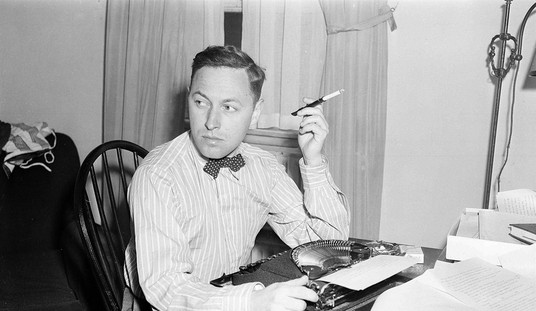When I started learning Hebrew at age 29, one year before moving to Israel, it seemed daunting. Until then, English was the only language I knew; now, at a relatively late age, I was setting out to learn another one that had a different alphabet, belonged to a different language family, and was overall distant and exotic from the standpoint of English.
Some of the ways in which Hebrew differs from English were indeed hard to get used to, others not so much. What was fascinating was to find how there are different modes of human speech. While the content of what gets expressed is basically the same, the mechanisms for doing so are not. It would be all the more intriguing to learn a third language; I wish I had the time.
1. Hebrew goes from right to left.
Hebrew is written from right to left like other languages from this general region. This is not hard to get used to. When a number range appears in Hebrew, it too is supposed to go from right to left, but not infrequently, these days, the opposite is done. So,
He lived a long life (1900-1995).
might look like this:
.(הוא חי חיים ארוכים (1900-1995
This also means that a book begins with the right-hand cover—and that, for some reason, I still have trouble getting used to. The other day I picked up a Hebrew book, looked at its left-hand cover, and thought, “Why are they putting the author’s picture and bio note on the front cover?”
2. Hebrew is more compact than English.
As a translator from Hebrew to English, I’m well aware that if someone sends me a 1000-word article to translate, it will come out 1300-1400 words in English. Since you get paid by the word, this works out well.
One reason Hebrew is more compact is that it compresses—indeed, mushes—words. The second clause of Rabbi Hillel’s famous aphorism is:
And if I am only for myself, what am I?
In the two-thousand-year-old Hebrew original, it’s much shorter:
וכשאני לעצמי, מא אני?
It sounds like “Oo’kshe’ani le’atzmi, ma ani?”—which would translate back literally into “A’wh’I f’myself, what I?” “And” in Hebrew is a single letter (ו) that acts as a prefix. “When” is “ka’asher” but is often shortened to the prefix “kshe.” “For myself” in English is one word in Hebrew, “le’atzmi.”
And since Hebrew does not use to be in the present tense, “What am I?” comes out as “What I?”
Or, because prepositions in Hebrew are often one-letter prefixes, “Depends on me” translates as:
.תלוי בי
or “Talu’i bi.” The “b” is a prefix for “on,” while the “i” means “me”; so “on me” is one word, “bi.”
It makes for a lot fewer words in general.
3. Hebrew has no vowels.
Hebrew’s lack of vowels is one of the harder things for an English speaker to get used to. The Hebrew aleph-bet—from which, despite the distance between the two languages, the alphabet is descended—has 22 letters, consonants all.
For children or novice learners, the nikkud system can be used to clarify vowel sounds. If I recall right, the ulpan—intensive Hebrew course—that we took upon arriving in Israel did not use nikkud; it was sink or swim.
For instance, the word for “article of clothing,” בגד, corresponds to b-g-d and is pronounced beg-ged. But that same word, בגד, also means “betrayed” and is pronounced bagad (a’s as in Bach).
Or, the same spelling, גן, corresponding to g-n, can mean gan (garden) or gen (gene), depending on the context.
How does one get the hang of this? To some extent there are patterns that repeat themselves; to some extent it’s case-by-case. But eventually you do get used to it, and it turns out that vowels are not an indispensable ingredient of life.
4. Hebrew word order is more flexible.
In Hebrew the verb doesn’t have to come after the noun. Sentences, in fact, often start with the verb.
For instance, here’s the Hebrew for “Time has passed since we talked”:
.עבר זמן מאז שדיברנו
—Avar zman me’az she’dibarnu, or, literally, “Passed time since we talked.”
In English, though, “Time has passed since we talked” sounds stiff and formal; you would have to add something to make it come alive, such as “A lot of time has passed…” or “It’s been a while…” In Hebrew, the inverted word order—Avar zman (Passed time)—has just the right inflection to convey reproach or whatever it is the person wants to convey.
And that is another reason Hebrew is more compact than English. Because of more flexible word order, it’s more often the case that word order, rather than adding words or expressions, is enough to convey nuance.
5. Hebrew adjectives: numbered, gendered, usually after the noun.
In English, whether it’s “white horse” or “white horses,” the adjective, white, is the same.
Not so in Hebrew. First of all, it’s “horse white”:
סוס לבן
—sus lavan. And if there are a few of them, it’s “horses whites”—
סוסים לבנים
—susim levanim. But what if the horse is a female? Again, different words: instead of sus lavan (white horse), it’s susa levana. The noun changes to the feminine form (susa), and the adjective changes along with it (levana).
And what if there are a few female horses? Still more words, because you’ve got to go to the feminine plural: susot levanot.
The reason this is not as grueling as it sounds is that there’s a music to it, which you internalize as you hear it more and more.
And this is good, because it’s still more complicated: whereas in English you say “Take this book,” in Hebrew it’s “Take the-book the-this.” In other words, “this” gets full adjective treatment, and has to accord with the noun, “book.” And what if it’s a few books? Then it’s “Take the-books the-these.”
Having started to learn this language at age 29, I’m never going to get to the finish-line where my Hebrew is the same as if I’d grown up speaking it. But the process of gradually acquiring Hebrew, at a pretty advanced level, is one of the most exhilarating, and educative, experiences I’ve had. Recommended.









Join the conversation as a VIP Member